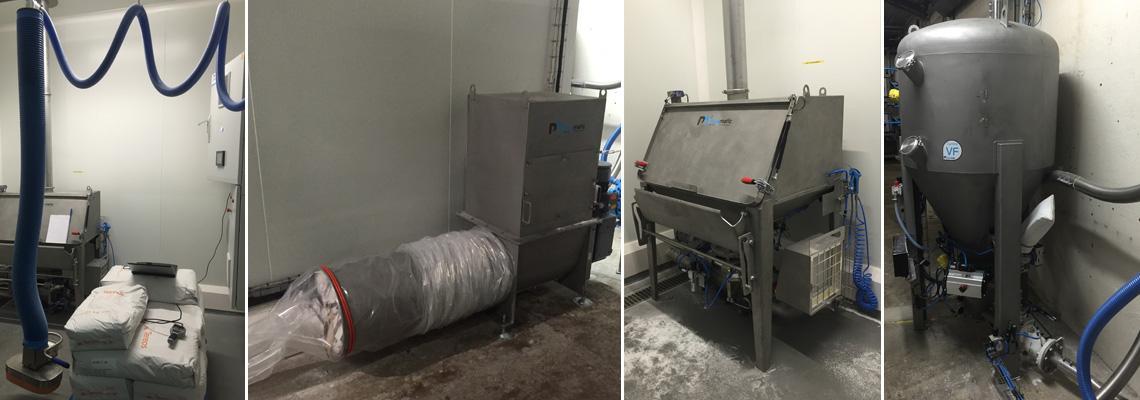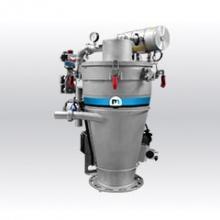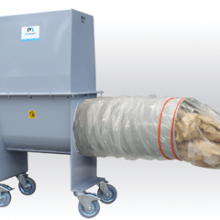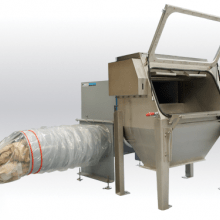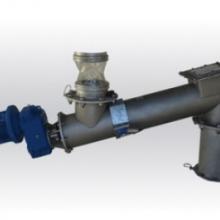Processed powder: maltodextrin with a bulk density of 500 kg/m³
Food flavors manufacturing
Our client specializes in mushroom extraction.
The customer required an industrial solution to unpack maltodextrin in 40 and 50 lbs. bags and transfer the material to a mixing tank.
Bag dumping station
The palletized bags are positioned on the side of the bag emptying station. In order to guarantee workstation ergonomics and easy handling, the operator grabs the bags using a vacuum bag lifter. The suction head of the bag manipulator is provided with a control handle fitted with a barrel allowing the load to be self-stabilized at any height. The sack tube lifter can freely rotate through 270°.
The operator positions the sack manipulator suction boot above the bag. By lowering the control handle, the vacuum line decreases suction and allows the bag to be lowered. The suction boot grips the bag with vacuum upon contact with the bag. By raising and lowering the control handle, it allows the operator to lift and lower the bag at will. Once positioned at the designated drop-off area, the operator lowers the control handle as much as possible to release the suction head from the sack, placing it on the Sacktip® bag dump station.
The access doors to the sack tip trays are equipped with gas springs to keep them securely in the open and closed position, and facilitate their opening.
Once the bag cutting and discharge operation is completed, the operator evacuates the bag through the CBU60 bag compactor. The bag compactor limits the volume of waste by compressing the bags and stocking them in a polyethylene sheath. In addition, it eliminates the release of any residual dust from the bags into the workshop.
Once the maltodextrin falls into the hopper of the bag dump station, it is transferred through a screw conveyor that has a mass flow rate of 4,000 lbs. per hour. Inclined at 30°, the mechanical conveyor regulates the feed of the material into the dense phase vacuum pneumatic conveying system. The rotation of its helical screw is adjusted by a VFD.
A gearbox is installed under the screw conveyor to facilitate the material transfer of the bulk material to to the VFlow® VFDEP cyclone with detached filter. This pneumatic conveying solution makes it possible to transfer problematic bulk materials, protect the filter from possible steam ingression during reactor loading and reintroduce the fines into the process to minimize product loss.
The separating cyclone, also known as the detached filter or cyclone receiver, is coupled to the pneumatic conveying cyclo-filter. It is equipped with a reintroduction pipe, which allows continuous collection of fines vacuumed for reuse of the material in the process, a storage area with level probes and a rotary airlock valve, which continuously discharges it into the mixing tank.
The cyclo-filter collects the powder and facilitates the air/product separation process. The highly efficient filter integrated into the cyclone provides the final separation of the air and the protection of the vacuum pump. A reverse jet pulse cleaning system allows the filter to be cleaned at each batch of conveying.
The pneumatic conveying system achieves a throughput of 2 tons per hour for a bulk material with a density of 0.5.














